
Neon Indian is the project of Alan Palomo, an important artist in early chillwave music. Palomo has released three albums under the moniker, each growing with maturity and intricacy, and a fourth album is in the works. In this article, I’ll concentrate on earlier Neon Indian tracks, in particular, two of my favourite tracks from Era Extraña, which Palomo recorded in Helsinki, Finland. In a follow-up to this article, I’ll continue by looking at tracks from 2015’s Vega Intl. Night School.
Neon Indian is an avid synth enthusiast and has an eccentric collection of hardware synthesizers. Around the recording of Era Extraña Palomo was using a Korg MS-20, the Roland SH-101, and the Voyetra-8, a rack-mounted analog synthesizer with powerful digital controls. Synths are such a big part of the Neon Indian sound that a deluxe edition of an album came with a tiny, portable analog synthesizer.
For this article, I’ll recreate the Neon Indian synth sound using the software synths u-he Repro, TAL U-NO-LX, and TAL Bassline-101, which is an emulation of the SH-101. You can download all the synth presets on this page at the end of the article.

I’ll start by looking at the synths of Polish Girl, from Era Extraña. The song’s main hook is a six-note synth sequence that runs continuously throughout the song. The part was likely sequenced, and the sound itself is a single square wave with the pitch modulated slightly with noise, which creates a raspy effect.
The sequence was likely recorded on the Roland SH-101, so I’ll use TAL Bassline-101 to create the same patch. Turn off the saw and sub oscillators, and turn the square wave oscillator’s volume to maximum. For the noise mod, set the VCO’s mod fader to 3, and the waveform selector under the mod section to noise. Set the filter cutoff to 8 and set the amp envelope with a short decay/release with no sustain, which creates a short, percussive effect. To create the sequence in Bassline-101, set the rests with the P button (pause step), and set the pitches using the +/- buttons.
The same patch is also used to play the melody in the bridge, with a slightly longer decay time on the envelope to create a less percussive and more melodic contour to each note.
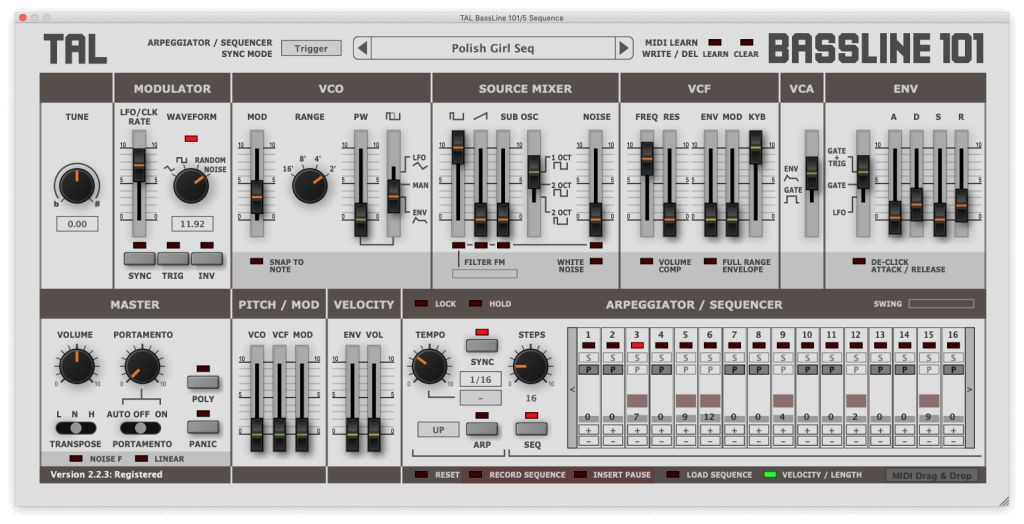
The synth that plays the chords is a classic analog pluck patch, where the LFO opens the filter to create the rhythmic pluck. An analog-style synth will sound best, such as u-he’s Repro synth. Create a patch with detuned sawtooth waves and set the filter to just above the 8 o’clock mark, with resonance at 11 o’clock. Set the rhythmic LFO modulation by activating the Host Sync switch to the left of the LFO section, then the LFO timing to 1/8th notes. Choose the sawtooth waveform for the LFO, and invert it in the tweaks menu, as the sawtooth LFO waveform is a reverse-sawtooth waveform (which ramps up) by default.
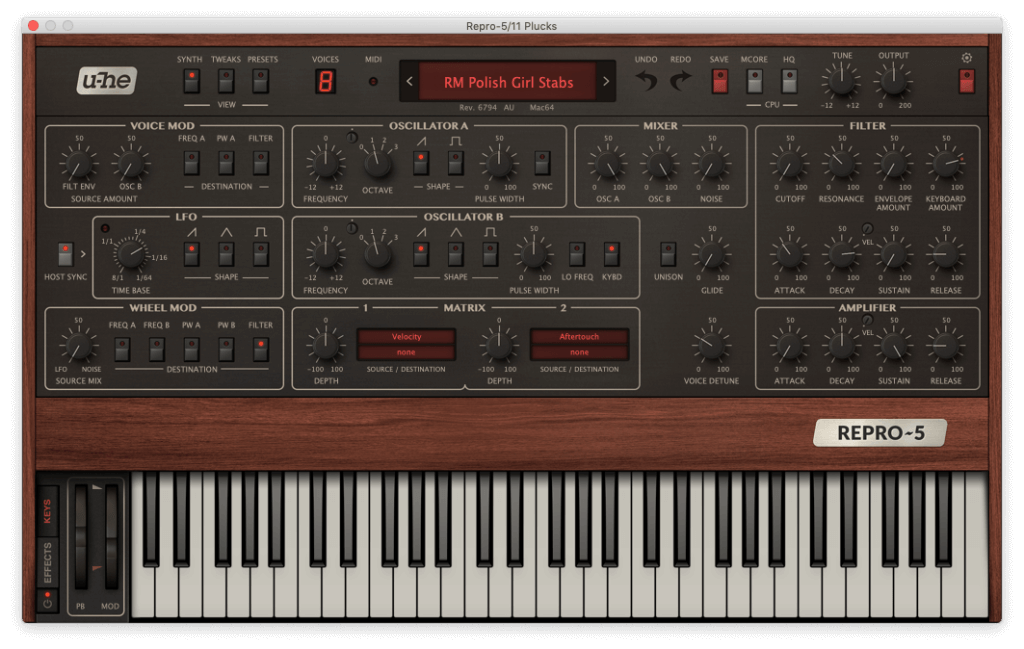
The arps patches that play throughout the song are reasonably simple; the main trick is that they are drenched in delay and reverb effects. In the arps 1 example below, there are two delay effects in sequence, one set to 350ms and the second set to 600ms. For the arps 2 example, I used Repro-1’s built-in arpeggiator to create a rapid chiptune-style arpeggio patch, and used Repro’s filter to fade the track in.
There are two synth leads in Polish Girls, and both of them make use of pitch-bending to create smooth, gliding melodies. The first lead is the mini synth solo at the 1:41 mark which uses a combination of glide/portamento to create legato movement between notes, as well as the pitch-bend wheel which is used to drop the pitch by an octave at the beginning and end of phrases.
In Repro-1, set up a patch with two square wave oscillators set two octaves apart, with the mixer volume of the lower oscillator at 35. To set the right filter settings, lower the cutoff knob to 72, resonance to 42, and keyboard amount knob to 0. Set the glide rate to 37, and the PB range selectors to +12 and -12, and use your MIDI keyboard’s pitch-bend control to raise and lower the pitch at the end of phrases.
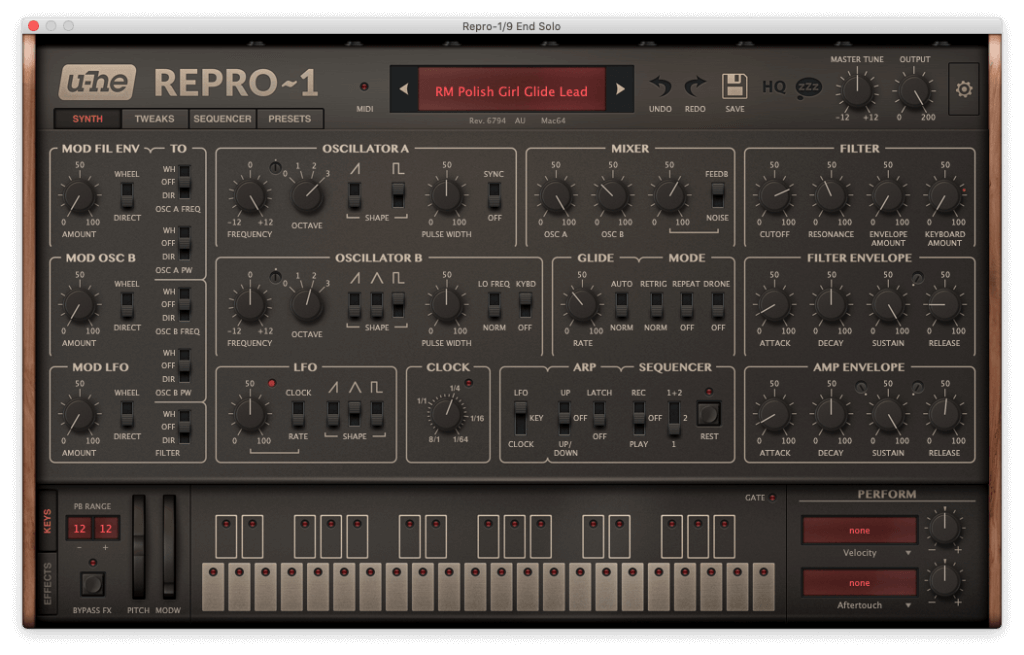
The lead that plays behind the vocal at the 1:08 mark is more unusual, as it has the pitch drop occur simultaneously with the resonant filter movement. This can be achieved by modulating the pitch with the filter envelope, and using the envelope’s release time to control the pitch drop. A similar patch to this is the Future Islands Balance synth lead.
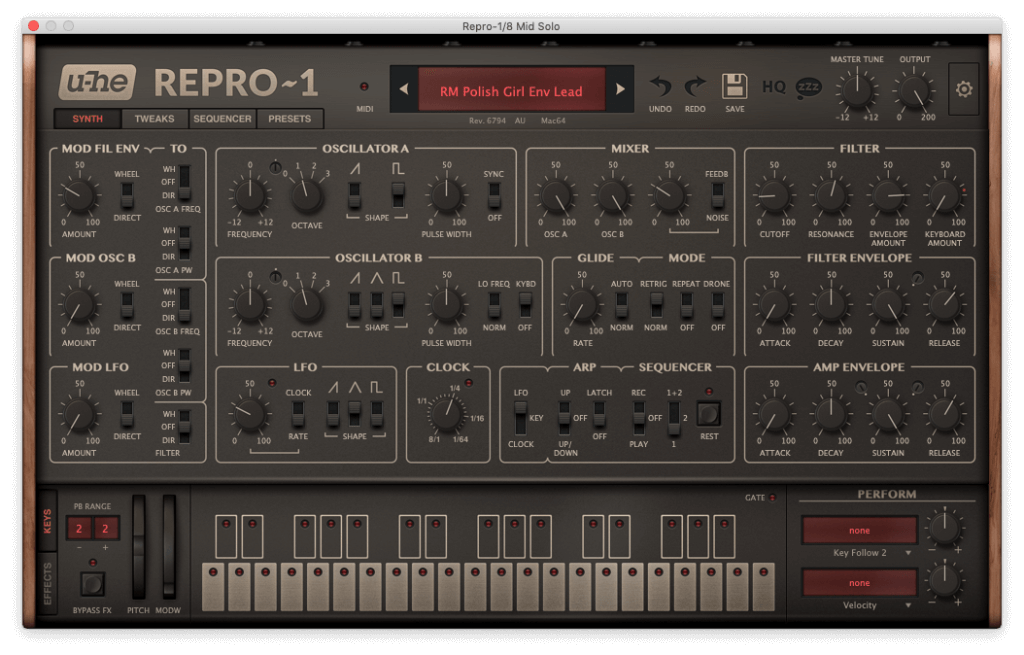
Check out the video below to hear all the patches in action. The drums are a mixture of samples from the Drumtraks kit, apart from the snare which is a synthesized noise patch from Bassline-101 run through plenty of saturation and processing.
Hex Girlfriend is one of Era Extraña’s heavier songs, and features at least six layers of synths over a distorted bassline and driving drums. Many of the synth patches in Hex Girlfriend are simple square wave patches that elicit a nostalgic video-game vibe.
The first synth layer I’ll look at is the gliding lead patch that is panned slightly to the left. The simple patch uses a single square wave oscillator and a slight envelope attack for a soft sound. To create the gliding pitch effect at the end of the phrase, ensure that the PB range is set to two semitones and use the pitchbend wheel to drop the pitch.
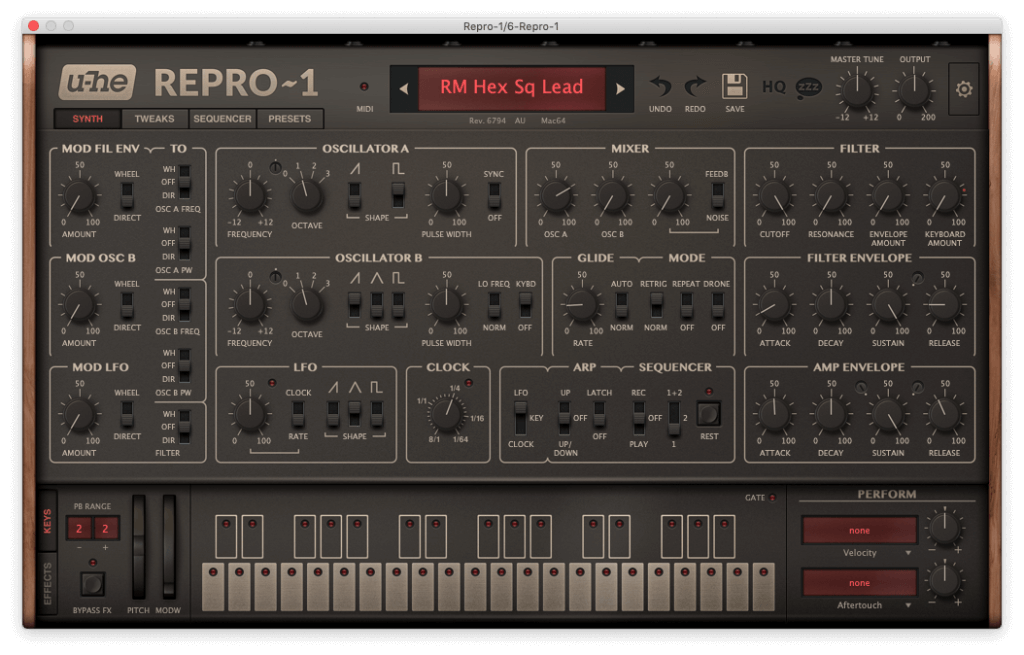
The phased arpeggios that play in the background are a little harder to ID, because they’re mostly obscured in the mix. I managed to create a similar sound running some filtered sawtooth waves from Repro-5 through reverb, an amp simulator, and a phaser.
In his EMusician interview, Palomo mentioned running a Roland Juno-6 through a Moog Moogerfooger on Era Extraña, which may be the source of saturation. This element of the sound has a big role on Era Extraña. For those wanting to work in-the-box (and at low volumes), you can use an amp simulator plugin. For this example, I used Ableton’s Amp effect on Boost mode, with gain set to 7, treble set to 0 and mix set to 50%.
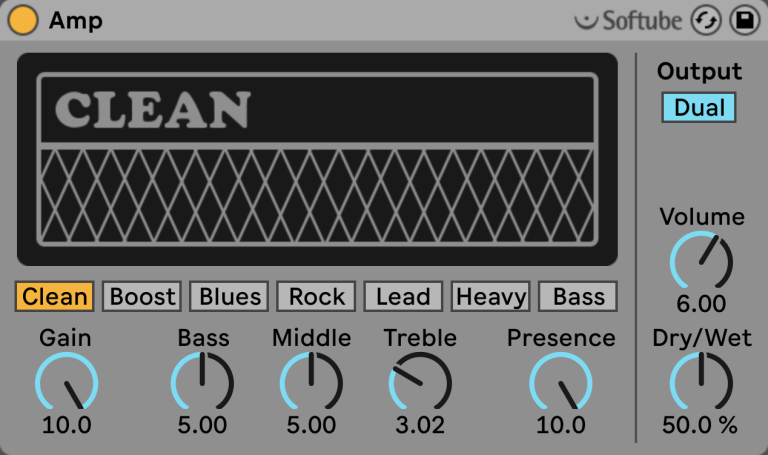
The ghostly lead that plays around the 0:30 mark is a simple patch that uses pitch vibrato and a medium-long attack amp envelope. In Repro-1, use square wave oscillators and set the amp envelopes attack time to 71 to create the fade-in effect. For the vibrato, go to the modulation section on the left and set the Osc A Freq and Osc B Freq switches to Dir, then raise the Mod Lfo amount knob to 2. Set the vibrato’s speed with the LFO rate knob, in this case setting it to 75 for a fast vibrato.
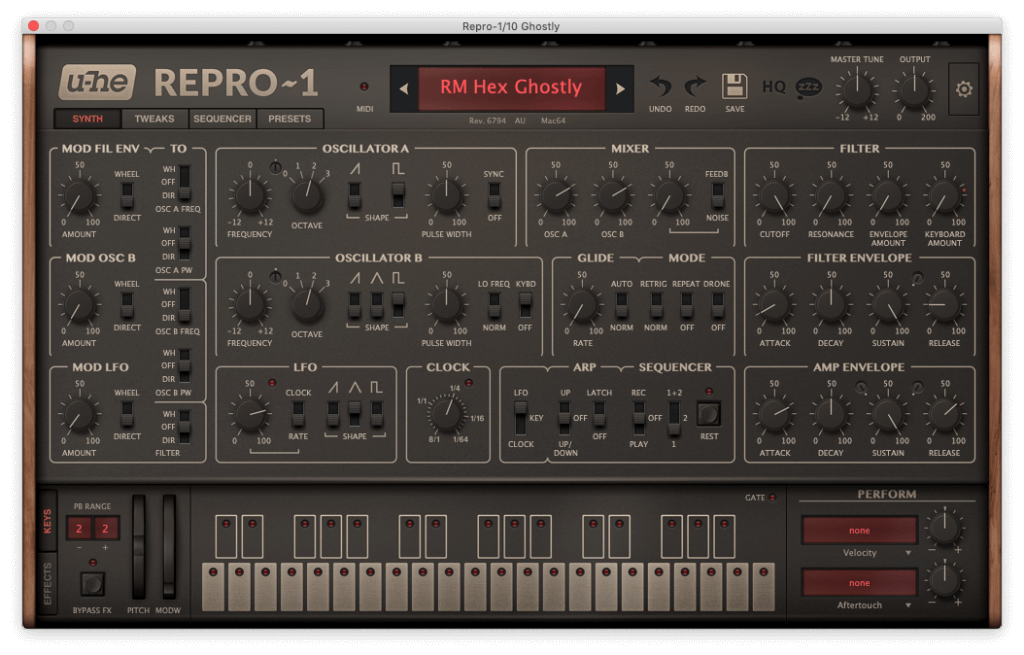
The chorus keys in Hex Girlfriend use pulse waves, a heavy chorus effect, and the reamping/overdrive effects, again created using Ableton’s Amp effect. TAL U-NO-LX is perfect for the patch, using a narrow square wave with the PW fader almost at maximum, a small amount of sub oscillator, filter halfway closed and the Chorus II effect activated.

The fun risers sound that follows the chorus section is multitracked, with two separate synth lines using pitchbends to raise and drop the pitch. The patches are simple square waves, although they’ve been saturated a fair bit. Set up two patches, the first with pitchbend ranges of -5 and +12, and the second with a range of -7. For a similar patch to this, check out the 1901 siren patch from the Phoenix Synths article I wrote for Reverb.com, which uses the Yamaha CS-80 synths unique ribbon controller to create rising pitch effects.
Here’s the full synth recreation video of Neon Indian’s Hex Girlfriend. The drums are entirely from the Drumtraks pack, and the bass is a Fender P-Bass with all effects created in-the-box.
Nice, is the p-bass chain similar to the one you posted on patreon? I’ve bee trying to get a crunchy bass sound like this.
I did use Decapitator for the bass sound, but I also used a second track with Cabinet and ValhallaRoom too.
What’s the preset that plays at 1:10 behind the lead of Polish Girl? Is it just a modified ‘Polish Girl Chord Stabs’ preset?
there’s two synth layers, the first is indeed a modified version of the ‘Polish Girl Chord Stabs’ preset, just without the modulation, so more of a pad. The second layer is a medium-long filter decay patch with high resonance.
could you please do Future Sick??
How do you load the repro presents in the plug in? I tried going to "load" like I do for tal but it didn’t let me load the patches
Hi Scott! You have to right-click your User folder, go to ‘Show in Finder/Explorer’ and drop the presets in there.
Thanks for the response! When I drag them in there and click on them I get the message "There is no application set to open the document “RM Hex Keys.h2p" do you know how to bypass that?
Hey, is the midi out on Patreon?
Yes, they are, you’ll find them listed in the post "Synth Sounds Bonus Content".
Hey, what Sound was the Polish Girl seq in the Bassline 101 before ? -Thanks Max
Has pt. 2 been released yet? I would like to see the patches for Dear Skorpio Magazine, Smut!, Annie, and The Glitzy Hive.